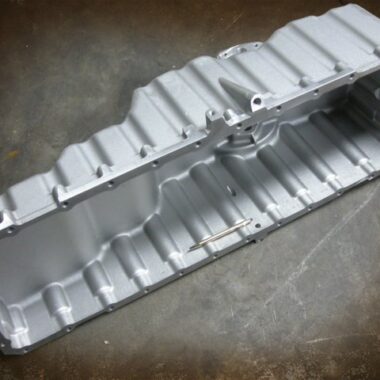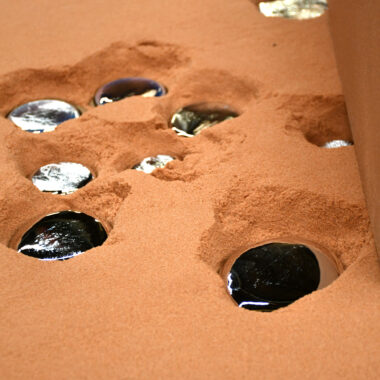Technology Released: Advancing Casting Aluminum Illinois
Technology Released: Advancing Casting Aluminum Illinois
Blog Article
Precision and Excellence: Best Practices for Effective Light Weight Aluminum Spreading
In the realm of light weight aluminum spreading, attaining accuracy and perfection is not merely an objective but a criterion that differentiates excellence. The meticulous procedure of aluminum spreading demands focus to information at every phase, from product selection to last finishing touches. casting aluminum illinois. Each step along the means adds to the ultimate success of the casting procedure, requiring a deep understanding of the interaction in between aspects such as mold and mildew design, procedure optimization, quality control, and ending up techniques. As we browse through the intricacies of this craft, revealing the best techniques that pave the method for perfect light weight aluminum castings becomes a trip worth undertaking.
Material Selection
When taking into consideration material option for aluminum spreading processes, toughness, and warm resistance are vital elements to assess. Aluminum alloys offer a wide variety of choices, each with special properties that can considerably influence the quality and performance of the final casted product. One common option is the 356 alloy, known for its outstanding fluidness and resistance to corrosion, making it appropriate for a variety of applications. For high-stress settings needing superior strength, the 7075 alloy sticks out because of its high strength-to-weight ratio. Additionally, the 6061 alloy is preferred for its great weldability and formability, making it a flexible option for detailed styles.
In the option procedure, it is critical to take into consideration not only the mechanical buildings of the alloy but additionally its thermal attributes. Warm resistance is important to make certain that the casted component can endure the temperatures it will be subjected to during procedure without jeopardizing its architectural integrity. By meticulously examining the longevity and warm resistance of various light weight aluminum alloys, manufacturers can make educated choices that result in top quality, reputable casted items.
Mold Style
In the realm of light weight aluminum casting ideal practices, an integral facet that substantially influences the final item's top quality and integrity is the precise design of the mold. Mold layout plays an essential role in identifying the dimensional precision, surface area coating, and overall intricacy of the actors aluminum part. When creating a mold and mildew for light weight aluminum casting, several key factors should be thought about to make sure ideal outcomes.
To start with, the mold design need to account for the material flow features of molten aluminum to stop defects such as shrinkage, porosity, or misruns. Proper gating and riser placement are important elements in the mold design procedure to facilitate smooth metal flow and reduce the development of air pockets.
Additionally, the mold layout should think about the cooling rate of the aluminum to avoid cracking or distortion throughout solidification. Sufficient venting and cooling down networks within the mold can help manage the temperature circulation and advertise uniform solidification of the steel.
Refine Optimization
To boost effectiveness and high quality in light weight aluminum casting, process optimization plays a crucial role in optimizing and improving procedures outcome. By fine-tuning each action of the spreading procedure, manufacturers can identify bottlenecks, minimize waste, and enhance overall productivity.
Furthermore, applying lean production principles can even more improve process optimization in light weight aluminum spreading. By concentrating and eliminating non-value-added activities on continual enhancement, makers can attain greater performance degrees and far better source utilization. Furthermore, routine tracking and analysis of key performance indicators (KPIs) help in determining locations for renovation and making data-driven choices to enhance the casting procedure constantly.
Quality Assurance
Refine optimization in light weight aluminum casting not just improves efficiency and productivity however additionally lays the foundation for rigid quality control measures to promote industry requirements. Quality control is extremely important in making certain that final aluminum spreadings satisfy the called for specifications and efficiency standards. Applying a comprehensive quality assurance process entails different actions, beginning from the initial style stage through to the last examination of the actors components.

Additionally, establishing clear high quality control protocols and paperwork treatments is vital for monitoring and keeping an eye on the spreading procedure. By maintaining comprehensive documents of manufacturing criteria, screening outcomes, and assessment records, suppliers can make certain uniformity and traceability in their aluminum casting procedures. Abiding by rigorous quality assurance methods not only improves the general reliability of aluminum castings however likewise instills self-confidence in consumers pertaining to the quality of the end products.
Completing Methods
Exactly how can aluminum casting be boosted via careful application of completing methods? Completing strategies play a vital function in boosting the try this site high quality and looks of aluminum spreadings. One of the primary techniques employed is surface area smoothing, which involves the elimination of any imperfections or harsh sides to attain a perfect coating. This procedure not only boosts the visual allure of the casting but also boosts its general capability by ensuring harmony and precision.

Furthermore, strategies like powder finishing or paint can be put on light weight aluminum spreadings to supply both aesthetic allure and additional defense against environmental variables. By meticulously choosing and applying the suitable ending up techniques, makers can make certain that their light weight aluminum castings meet the highest standards of high quality and efficiency.
Final Thought
Finally, successful aluminum casting requires precision and perfection in material selection, mold design, see this process optimization, quality control, and ending up techniques. By complying with best techniques in each of these locations, makers can guarantee consistent and high-grade outcomes in their light weight aluminum casting processes. casting aluminum illinois. It is essential to focus on every information and continually make every effort for improvement to attain optimal outcomes in light weight aluminum spreading
The precise process of aluminum spreading demands interest to detail at every phase, from product choice to final ending up touches.To boost effectiveness and top quality in aluminum casting, procedure optimization plays a pivotal role in making the most of and enhancing operations outcome.Process optimization in light weight aluminum spreading not only enhances efficiency and efficiency however also lays the structure for rigid quality control procedures to support industry requirements.One essential facet of top quality control in aluminum spreading is the use of innovative screening strategies to assess the integrity and residential properties of the spreadings.In final thought, effective aluminum spreading needs precision and perfection in product selection, mold and mildew style, process optimization, quality control, and ending up strategies.
Report this page